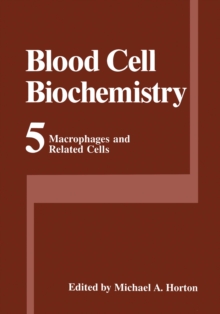
Description
This series of books, devoted to aspects of blood cell biochemistry, development, immu- nology, and ultrastructure, has evolved and separated from the long-established Plenum series Subcellular Biochemistry.
It is the intention of these volumes to draw together related areas of investigation and to provide, in the fullness of time, complete coverage of this rapidly advancing important biomedical discipline.
Both fundamental and medically applied topics, dealing with normal and pathological cells, will be included.
This, the first volume of the series, contains a diverse collection of chapters, all of which relate to erythroid cells.
The range of material included is extremely broad and the authors have used contrasting technical approaches, both within their personal experimen- tal studies and within their manuscripts.
This has led to the production of a very interest- ing compilation, which does, nevertheless, possess a strong overall thematic unity.
As with all edited volumes, some topics of importance and interest are not included.
This may be because of oversight on my part, as editor, or because the authors originally selected failed to submit their manuscript by the agreed-upon submission date.
For these omissions I take full responsibility and trust that at least some of the topics omitted, for instance membrane cation transport systems, will be covered within a future volume of the series.
This book commences with two chapters of a developmental nature.
Information
-
Download - Immediately Available
- Format:PDF
- Publisher:Springer US
- Publication Date:29/06/2013
- Category:
- ISBN:9781475795288
Information
-
Download - Immediately Available
- Format:PDF
- Publisher:Springer US
- Publication Date:29/06/2013
- Category:
- ISBN:9781475795288










